A Scion Society of The Baker Street Irregulars
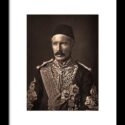
The Adventure of the Framed Portrait (1989)
“… your eyes fixed themselves upon your newly-framed picture of General Gordon …”
– The Adventure of the Cardboard Box (CARD)
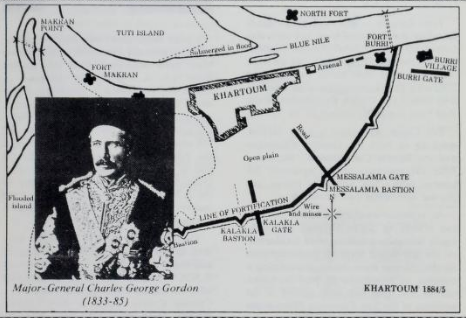
I suppose that the Adventure of the Framed Portrait began with my childhood love of reading. Reading and Numismatics were two childhood passions that would carry over into my adult life. I have discovered that there are certain books, that like good wine, seem to improve with age. For me, some of these have always been the various adventures of Sherlock Holmes, by Sir Arthur Conan Doyle. Even after many years and many readings, I can still sit down on a long winter’s evening, before the fire, and within a few moments find myself rattling along, across Victorian London, in a hansom cab, with the great detective and his ever-present biographer. Dr. Watson.
Even now, I am often intrigued by the little glimpses of certain personalities, of the era, provided by the author. I would like to share one of these glimpses with you now. In the story, THE CARDBOARD BOX, it is pointed out to us, by none other than the master detective himself, that two of Dr. Watson’s most prized possessions were, “a framed portrait of General Gordon and an unframed picture of Henry Ward Beecher.” Neither the great Holmes nor the good doctor ever provide any additional information concerning why this should be so. It would appear that Holmes has provided a mystery for us to solve. Using the master’s own methods, let us pose a series of questions, in the answers to which, must lie the solution, to the mystery. What else do we know about Dr. Watson? Why did he frame one portrait and not the other? Who were Gordon and Beecher? Lastly, why were the portraits prized?
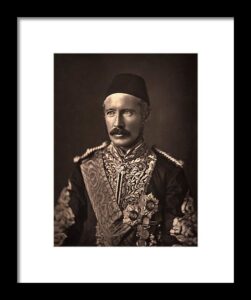
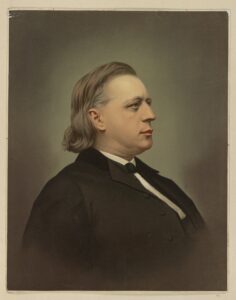
A Framed Portrait of General Gordon and an unframed picture of Henry Ward Beecher
We know, from what Sir Arthur tells us, that Dr. Watson was a retired medical officer who had been a wounded veteran, of the Afghan War. He was tall and heavily built. In addition, he enjoyed reading and music, and, as a younger man, had played rugby at college. We also know that whenever Holmes had to face down the criminal classes, he invariably requested the assistance of the doctor. We have here the description of a man who was by profession and inclination, a humane man. It is also the description of a man who jolly well knew his duty and was a formidable and fearless chap in carrying it out.
Why was one portrait framed? Elementary! A frame is used to protect a picture. We may assume that the framed portrait was the more highly prized. Let us move on to the question of the identities of Beecher and Gordon to determine if this assumption is correct. Henry Ward Beecher (1813-1887), an American clergyman, was internationally famous for his anti-slavery and pro-woman’s suffrage views. He had been involved in a scandal involving a friend’s wife which had, in his last years, overshadowed his earlier good works. Thus, we see that while the doctor might well be an admirer of Reverend Beecher’s principled
viewpoint, he might still be hesitant to frame and display the picture, in Holmes’s rather public quarters.
General Charles George Gordon (1853-1885) was one of those historic personages who was really larger than life. Gordon began his career, as a 2nd ieutenant, during the Crimean War. Upon returning to England, he was posted to an Anglo-French expeditionary force in China. A protege of General Charles Stavely, he participated in the capture of Peking from Taiping rebel forces. His military ability, along with his diplomatic demeanor, brought him to the favorable attention of the Emperor of China. In 1863, the emperor appointed him to the command of a Chinese army unit, and he was charged with the responsibility of
suppressing the rebellion. After thirty-three actions, culminating in the fall of Nanking, “Chinese Gordon” and “The Ever-Victorious Army” suppressed the ten year old rebellion within one year. A grateful emperor appointed him as a Mandarin of the First Rank. Gordon, who was now world famous, would spend the next ten years of his career as the British Empire’s troubleshooter, involved in military and diplomatic missions around the globe. In 1 874, with the blessings of his government, he entered the service, of the Khedive of Egypt. The Khedive appointed him Governor of the Sudan. During the six years that he was governor, he established diplomatic relations with Ethiopia, improved trade with surrounding countries, implemented reforms in the government, and totally suppressed
the slave trade.
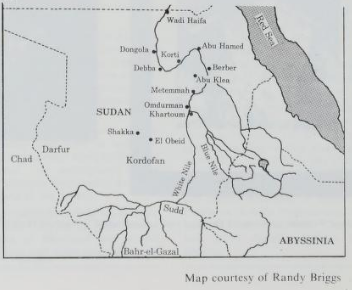
Gordon was in England in November 1883, when forces under Mohammed Ahmed, called the Mahdi, revolted in the Sudan. The Khedive requested the government of Prime Minister Gladstone to send an army to put down the revolt. Instead of an army, Gladstone sent Gordon. His orders were to evacuate all British subjects from the Sudan. “Gordon Pasha” set up headquarters in the city of Khartoum and proceeded, against orders, to fortify the city. By March 2, 1884, when the city was surrounded by the Mahdiâ’s forces, he had succeeded in fortifying Khartoum and in evacuating all British subjects, with the exception of himself and two staff members. Refusing the offer of a safe conduct from the Mahdi, Gordon proceeded to take command of the defense of the besieged city.
As might be expected, during the siege, shortages of all kinds occurred. Not the least of these, was a shortage of money. Gordon solved this problem by the issue of paper notes, in eleven denominations, ranging from one piastre to fifty Egyptian pounds. The total issue, throughout the siege, was equal to value to L 168,500 Sterling. Gordon stated that he was “personally responsible for the liquidation and anyone can bring action against me, in my individual capacity, to recover the money.” Khartoum was to hold out for nearly ten months. Gordon, along with the other heroic defenders of Khartoum, was killed during the evening of January 26, 1885, when the city fell before an all-out assault. An Anglo-Egyptian relief army was only two days journey away. One of the Mahdiâ’s first acts, as the new ruler of the city, was to order the destruction of all the notes issued by Gordon.
I believe that we have solved the question of why Dr. Watson kept a portrait of General Gordon. I imagine that the doctor would have enjoyed having one of General Gordon’s notes as well. I am sure that he probably believed, as did everyone else for many years, that all of them had been destroyed. In 1931, a hoard containing two thousand of these notes was discovered in the Sudan. They were eventually purchased by Spinks, who sold sets, as well as individual notes of some of the more common varieties. (If any could be called such!). During the “Blitz” of London, many of the notes which remained unsold in Spink’s inventory, were destroyed. Thus, an already scarce supply was further depleted.
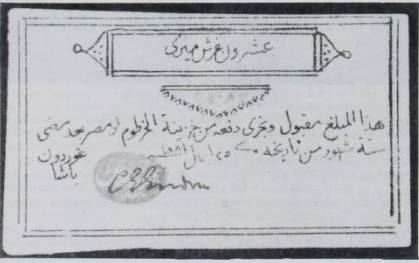
The note illustrated here is for the sum of twenty piastres. It, like all other known examples, is printed on a rather brittle, card-like material. This example bears the serial number 12083, handwritten, in Arabic script. This is located in the semi-circle in the center of the note. The note is dated 25.4. 1884. In addition, the note bears Gordon’s title as Pasha, has his seal in blue, and a hectographic reproduction of his signature. There are some notes known that have hand ignatures believed to be that of Gordon, himself.
I have found that even so-called light reading has opened the doors to adventure, research, and numismatic reward. In this case, the fictional Watson pointed towards the very factual General Gordon. This, in turn, led to an increase of my numismatic knowledge. May your adventures, through books, be as rewarding!
********************
For those interested in obtaining more information, the following references may be used as a starting point.
Doyle, Sir Arthur Conan, The Annotated Sherlock Holmes. Edited by William S. Baring-Gould, 2nd Edition. New York: Clarkson N. Potter Inc., 1975. 2 Vols.
“Gordon, Charles George”. The Dictionary of National Biography (Oxford University Press, Oxford, U.K.), 1968, Vol. VIII P.P. 169-176.
Pick, Albert. Standard Catalog of World Paper Money. Edited by Colin R. Bruce II and Neil Shafer. 5th Edition. Iola, Wisconsin: Krause Publications, 1986. 2 Vols.
In addition. I would like to extend my sincere appreciation to Randy Briggs, who very kindly provided one of the illustrations for this article, as well as information regarding the discovery and distribution of the notes.`
This article was originally printed in the Winter 1989 issue of Calcoin News, and is reprinted here with the permission of the California State Numismatic Association.
The original article can be found on the Newman Numismatic Portal.

Sorry, comments are closed for this post.